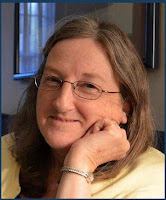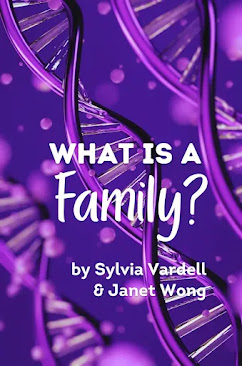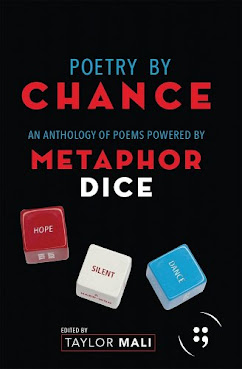 Now, for today's post: In honor of National Poetry Month and Poetry Friday, we've invited Helen Frost as a guest TeachingAuthor blogger today. I am a HUGE fan of Helen's work, especially Diamond Willow (Frances Foster Books, FSG), and I had the pleasure of meeting her for the first time at the 2012 Association of Writers and Writing Programs (AWP) conference in Chicago in March. When I asked Helen for a short bio to introduce her post, here's what she sent:
Now, for today's post: In honor of National Poetry Month and Poetry Friday, we've invited Helen Frost as a guest TeachingAuthor blogger today. I am a HUGE fan of Helen's work, especially Diamond Willow (Frances Foster Books, FSG), and I had the pleasure of meeting her for the first time at the 2012 Association of Writers and Writing Programs (AWP) conference in Chicago in March. When I asked Helen for a short bio to introduce her post, here's what she sent:"Helen Frost worked for about twenty years as a poet before publishing her first poetry collection, supporting herself with work she also loves, that of a teacher--in elementary schools, as a poet-in-the-schools, and at the college level. Her books include six novels-in-poems for children and young adults, two collections of poetry for adults, two plays, a book about teaching young people to write about difficult issues, two picture books for younger readers, and two anthologies. Though she continues her work with children and at-risk teens through school author visits, she is now a full-time writer, living in Fort Wayne, Indiana."
 Helen's credentials are impressive, but she neglects to mention the numerous awards her books have won, including a Michael Printz Honor Award for Keesha's House (Farrar, Straus and Giroux). Her most recent novel, Hidden (Frances Foster Books/FSG, for ages 12-16), has already received much acclaim, including being named a 2012 ALA Notable Book and 2012 Lee Bennett Hopkins Poetry Award Honor book.
Helen's credentials are impressive, but she neglects to mention the numerous awards her books have won, including a Michael Printz Honor Award for Keesha's House (Farrar, Straus and Giroux). Her most recent novel, Hidden (Frances Foster Books/FSG, for ages 12-16), has already received much acclaim, including being named a 2012 ALA Notable Book and 2012 Lee Bennett Hopkins Poetry Award Honor book.And here's a brief description of her wonderful new picture book Step Gently Out (Candlewick Press), which features photographs by Rick Lieder:
The book is a terrific tribute to both Earth Day and Poetry Month. No wonder it has received multiple starred reviews!"Stunning close-up photography and a lyrical text implore children to look more closely at the world around them."
Now, finally, for Helen Frost's post. I asked Helen to begin by telling us how she became a TeachingAuthor, and then to share a poetry-writing exercise, poem, teaching tips/ideas, and an interesting anecdote about her life as a writer.
Teaching and writing are both important to me, and each informs the other. I’ve taught children and adults of all ages; I’ve written for pre-schoolers, beginning readers, elementary and middle school children; teens; and adults--and I’ve taught teachers about teaching writing.
Teaching poetry is especially joyful for me. I love seeing students approach poetry with fascination and enthusiasm, and perhaps a touch of caution because they know it can open people up to one another in ways that can be a little scary. I take time to create an atmosphere of safety and respect, simply by asking each student to raise their hand in agreement to my two rules: You can’t write anything that will hurt someone’s feelings. You can’t tease anyone about a poem they share, either here in the classroom or later on, outside of class. (No one is ever required to share, but always, at least half of the students want to.) I make eye contact with each student as I confirm that they agree to these two rules, and after that the respect is self-enforcing.
Here’s a classroom activity I call “Poetry Sticks.”
1. Make a collection of interesting titles of poetry collections.
I’ve cut titles out of catalogs that arrive in the mail, but you could as easily use Internet websites of poetry presses. Here are a few: Pecan Grove Press, Ahsahta Press, Truman State University Press, Copper Canyon Press, Red Hen Press, and Tupelo Press.
2. Using heavy-duty, clear tape, tape the poetry titles onto Popsicle (craft) sticks. Or you could write the titles on the sticks with a sharpie. Make 100 or so to begin with, and then add more as you have time.
3. Spread all the poetry sticks on a desk (or on the floor) and invite students to choose one. The process of choosing is important; it can be chaotic, but there’s something in the activity of choosing that makes this work.
4. Ask students to :
- Place the stick in the middle of a blank sheet of paper and read it a few times until it suggests something--some language. Then write as many words and phrases as you can in 2 or 3 minutes.
- Circle your favorite words--up to ten of them.
- On a clean sheet of paper, write a poem that uses at least three of your circled words.
For Poetry Friday today, I'll share a poem from Spinning Through the Universe: A Novel in Poems from Room 214 (Frances Foster Books/FSG). Each poem in this book is written in a different form, in the voice of one of the students in Mrs. Williams’ 5th grade class. The form of “Friend” is a “Rondelet.” (Definitions of all forms can be found in an appendix to Spinning Through the Universe.)
Friend
Sharrell
What should I do? Maria told me not to tell.
What should I do?
Her arms are bruised. She has these two
red hand prints on her back. I fell,
she says, but then she asks, Sharrell,
what should I do?
Teachers in the audience may find it interesting to know that teachers have used Spinning Through the Universe in many ways, in classrooms from 3rd through 11th grade. (I taught for three years in a one-teacher school in Alaska, so I’ve always appreciated resources that can be used at different grade levels.) Third graders might learn that the acrostic form can be more sophisticated than writing one word for each letter of your name; 5th graders might do a readers’ theater, with each student reading one of the voices, and then creating a “section 3” of the book, imagining what happens next; high school students might try some of the more complex forms and create new characters of their own. [Carmela here. Teachers take note: Helen has a whole page of "Teaching Ideas" on her website.]
To close, I’ll share a story about the first school visit after the publication of Diamond Willow (Frances Foster Books, FSG, 2008). In Diamond Willow, part of the story is told by animals who have ancestral relationships to Willow and the other characters. There’s a little mouse who listens from under a table and then warns Willow of something the mouse (and the reader) wants her to know. When I was spending a day with a very excited group of 5th graders who had just read Diamond Willow, a mouse came into the classroom! According to the teacher and the custodian, this had never happened before in this school. We were all convinced that the mouse wanted to share in the fun and remind us of the important part that a mouse had played in the story.
Thanks for inviting me to TeachingAuthors. Happy Poetry Month, everyone!
Thank YOU, Helen! I especially love the mouse story. And I know our readers who are teachers will appreciate the activities you suggest. I'm going to try the "Poetry Sticks" idea the first chance I get.
Readers, now you can head on over to read April's interview with Janet Wong and enter for a chance to win one of THREE autographed copies of Janet book, Declaration of Interdependence: Poems for an Election Year. Then, check out the great Poetry Friday roundup at the Booktalking blog .
Happy writing, and happy Poetry Friday!
Carmela













13 comments:
I was at my son's Montessori preschool a few weeks ago, and he was doing a screwdriver work. There was a little book on the tray that was of more interest to him than the actual work. (And believe me, this boy loves screwdrivers.) The book was called "What Is a Screw?". I saw that the author was Helen Frost, and I sat up straight. I hate tools. I hate screws. Patrick and I had a lovely bonding moment over your book. This was probably not the project that you imagined would inspire as much as, say, KEESHA'S HOUSE. Grateful for and appreciative of your entire body of work!
Thank you, Helen, for gifting our blog with your Guest Post today.
I'm a BIG Helen Frost Fan. :)
In fact, I was seated in the audience next to Carmela at your AWP presentation, taking in your every word.
I'll be sharing your Poetry Sticks - a delicious idea! - next week when I visit an Aurora School.
Oh, my, Helen--what an amazing body of work! Your Poetry Sticks exercise sounds fabulous! Thanks for sharing ~
I've always thought that you have a Hogwarts professor-ish quality to you, Helen: and now your mouse story confirms it! THAT was no ordinary mouse, I am sure!!
That Poetry Sticks exercise sounds like such a great writing prompt. I bet kids really love doing it.
I love the mouse story. It gave me goosebumps.
Great post! I'm so happy to be introduced to Helen Frost!
Let's see if I can comment as Anonymous, since I don't have a Google identity.
Jeanne Marie, it's true that those little Pebble Books that I wrote years ago are often a great delight to early readers--teachers sometimes don't know I'm all one person!
And what fun to know you were in the AWP audience, Esther.
Really, what a great group of readers and commenters Carmela has gathered together in this wonderful space. Thanks, everyone,
Helen Frost
now to see if I can prove I'm not a robot.
What a beautiful post! I love Helen Frost and I've reviewed a few of her novels-in-verse when we had a poetry theme several months back. Her voice is crystal and she speaks from a place of truth. :)
Thank you Carmela for this wonderful post with Helen, and thank you Helen for your books and these new (to me) ideas. I have just ordered Hidden & am so looking forward to it. I loved Keesha's House & have used parts of it in my own teaching. Now that I am working with teachers, I will share your stick idea with them for sure. What fun students will have. Thank you again!
LOVE the poetry sticks!! My classroom will have a set soon! I don't know how I missed THROUGH THE UNIVERSE, but I'm adding it to my cart to keep STEP GENTLY OUT company until I place my order!
Thank you for introducing me to the TEACHING side of this fabulous AUTHOR!
Thanks everyone for your comments. We're so pleased to introduce Helen's work to readers who aren't familiar with it. And Mary Lee, I loved what you said about meeting the TEACHING side of a wonderful AUTHOR. :-)
Thanks again, everyone. SPINNING THROUGH THE UNIVERSE is really a little mini-poetry class, the book I wish I'd had when I was teaching 5th grade. Teachers have used it in so many wonderful ways, and students really take off with their own writing after reading it with a thoughtful and enthusiastic teacher.
I've loved "meeting" you all here.
Helen Frost
Wonderful post! Thank you, Carmela, for posting and thank you, Helen, for sharing your poetry sticks and other sage teaching points.
Post a Comment